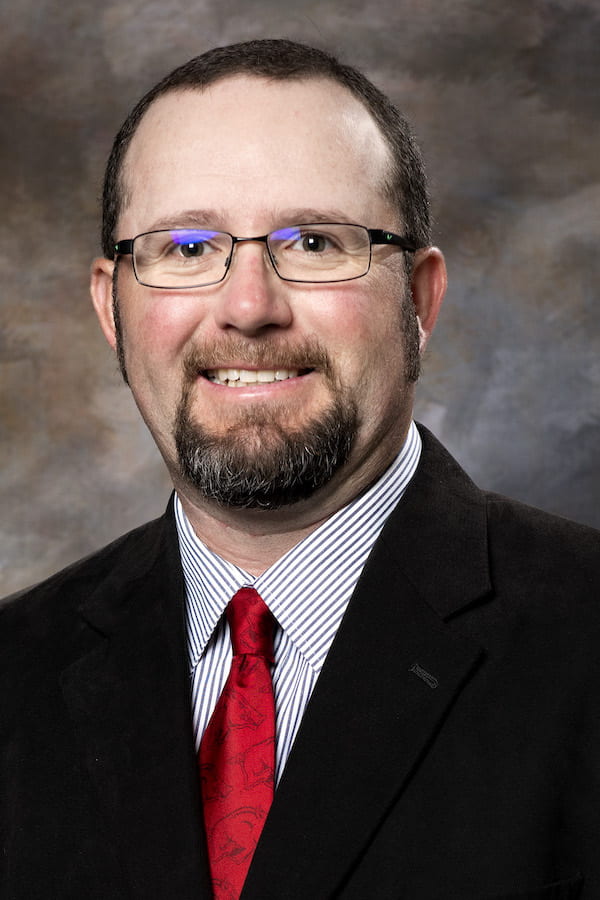Saving Producers Time and Resources with Soil Testing Model

Scientists have developed a prediction model that offers producers critical information about soil health in less time and at no additional cost. Their breakthrough in predicting soil organic matter and texture for most Arkansas soils gives consumers a more complete picture of soil health, allowing them to make more informed decisions about management issues like fertilization, irrigation and herbicide applications without compromising turnaround times. The prediction model may also be used in other states with similar soils.
The Problem
Standard soil testing provides information on plant-available nutrient content and soil pH levels. However, it doesn’t offer details about soil organic matter and texture without additional time and expense for producers.
Maps, such as the Web Soil Survey offered by the U.S. Department of Agriculture’s Natural Resources Conservation Service, can be used to provide information on soil type in different areas, but the resolution of the map might not indicate changes in soil texture in a small amount of space within a field.
Soil organic matter and texture are key properties influencing soil nutrients, water holding capacity and residual herbicide activity and efficacy. Producers need field-specific information to fine-tune management decisions.
The Work
Researchers with the Arkansas Agricultural Experiment Station used soil testing data to create a new prediction model to estimate soil texture and organic matter as part of routine soil testing.
Gerson Drescher, assistant professor of soil fertility for the experiment station, led the study. He built the model to use Mehlich-3 nutrient and soil pH data from the experiment station’s Marianna Soil Test Lab, which analyzes about 200,000 soil samples annually. A dataset of 409 soil samples from different production systems was used to fine-tune and verify prediction models. He then calibrated and validated models for accuracy.
Co-authors of the study included Trent Roberts, professor and interim department head of crop, soil, and environmental sciences; Nathan Slaton, associate vice president for agriculture and assistant director of the Arkansas Agricultural Experiment Station; and Alden D. Smartt, program associate in the crop, soil, and environmental sciences department.
The Results
Based on the prediction models, Drescher has heightened the standard for soil testing, allowing for greater precision of soil type estimates by geographic area. The model is accurate for predicting the most common soils used in crop production in Arkansas, especially clay soils. The model is less accurate for sandy soils, and soils with very high organic matter.
Over time, the models can be evaluated for accuracy and optimized with new soil samples to improve soil texture and organic matter prediction.
The Value
Information on soil health guides plans for soil preservation decisions like fertilization and irrigation. This model allows for a quicker processing time for gaining this key information while taking advantage of standard soil testing methods already in use.
The time a soil test takes depends on the information requested. Each additional test on top of the routine soil analyses can add days or weeks to the total testing time. Drescher’s prediction model for organic matter and soil texture cuts those additional tests and can reduce turnaround time by at least half.
The models can also be applied to other states with similar soils. Arkansas’s common agricultural soils are fine and medium categories, which include silt loams and silty clays.
Read the Research
Soil Texture and Organic Matter Prediction Using Mehlich-3 Extractable Nutrients
Agrosystems, Geosciences & Environment
Volume 7, Issue 1
https://doi.org/10.1002/agg2.20461
Supported in part by
The Arkansas Soil Test Review Board through administration of Fertilizer Tonnage Fees.
About the Researcher

Gerson Drescher
Assistant Professor
Ph.D., Soil Science, Federal University of Santa Maria
Agricultural Sciences Licensure, Federal University of Santa Maria
M.S., Soil Science, Federal University of Santa Maria
B.S., Agronomy, Federal University of Santa Maria

Nathan Slaton
Assistant Director of the Arkansas Agricultural Experiment Station
Ph.D., Agronomy, University of Arkansas, Fayetteville
M.S., Agronomy, University of Arkansas, Fayetteville
B.S., Agronomy, Murray State University

Trenton Roberts
Professor
Ph.D., Soil Science, University of Arkansas, Fayetteville
M.S., Soil Science, University of Arizona, Tucson
B.S., Plant Science, Oklahoma State University

Alden D. Smartt
Program Associate
M.S., Soil Physics, University of Arkansas, Fayetteville
B.S., Environmental, Soil, and Water Science, University of Arkansas, Fayetteville




